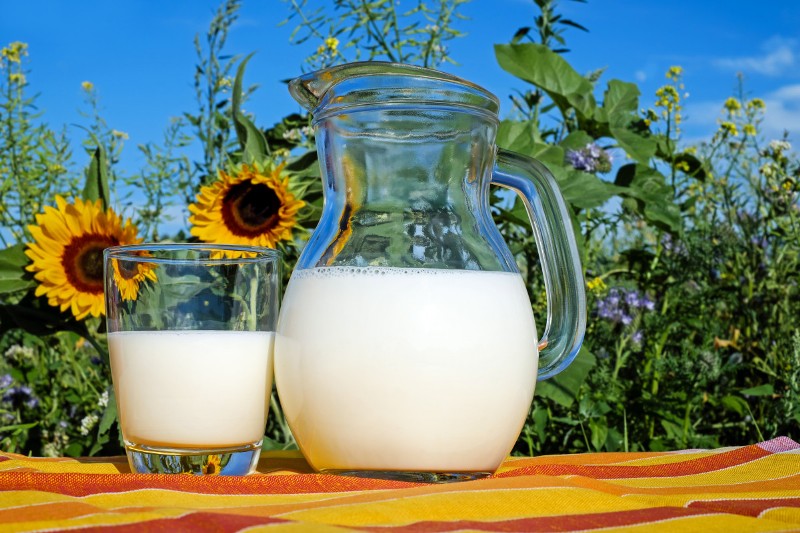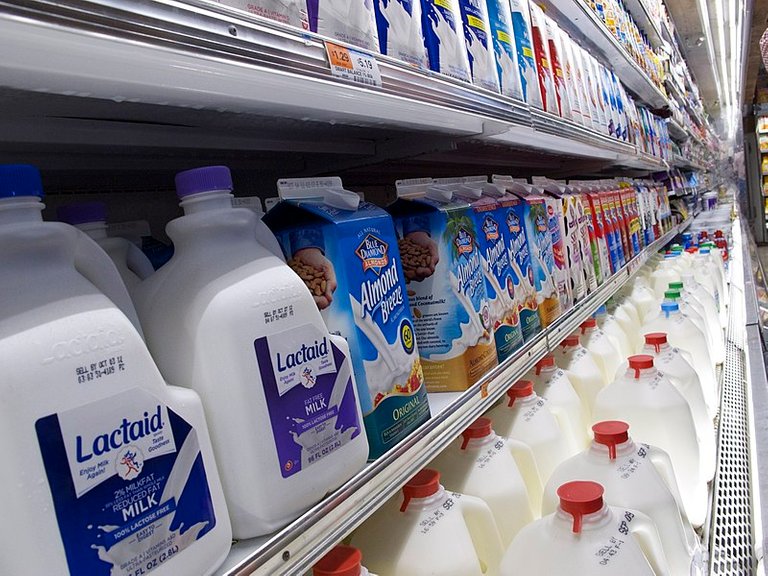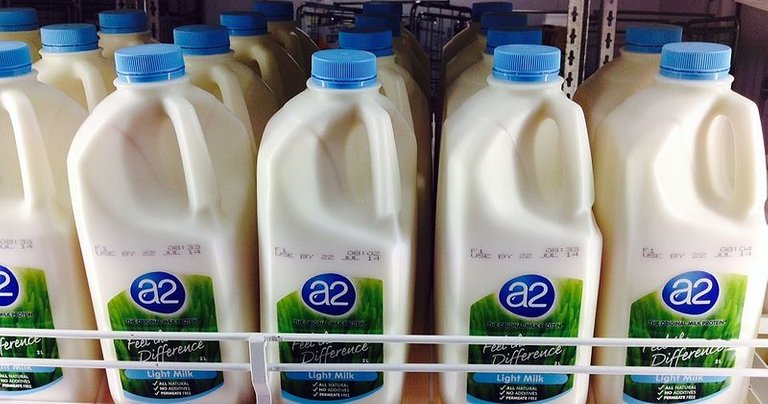Light milk, lactose-free milk, A2 milk... Is milk still milk?
Any mammal, including us, receives milk as its first food, in the form of mother's milk. Except for some cases, in our first stage of life it is the only food that provides us with the nutrients and other benefits that are indispensable for our healthy development as newborns. This has led us to think of milk as one of the healthiest foods, and with a great amount of benefits, for the human being, and that is why we keep it in our diet even after our childhood, only that we opt for milk of animal origin (especially cow's milk), either as liquid milk, cheese or other derivatives.

Milk has been part of our diet for thousands of years. Source: pxhere.com.
But it is not uncommon that when talking about milk, we find in the market a wide variety of options, such as light, semi-skimmed or lactose-free milk; that is because over the years consuming animal milk we have been adapting it to our needs. For example, the consumption of milk of animal origin began thousands of years ago, beginning with the domestication of cattle, but in the Middle Ages it was very difficult to preserve and had to be consumed fresh or in the form of cheese, then other techniques would appear that would allow it to be consumed in the form of butter, yogurts and other derivatives.
It would not be until the appearance of the pasteurization process, thanks to the findings of Louis Pateur in 1836, that the quality of liquid foods would be improved, this process was suggested for milk in 1886, and with it it was possible to give milk a more hygienic processing and more predictable duration periods, which meant a great advance in the quality of life of people.
A century after this breakthrough in milk processing, the change in the eating habits of people, especially the inhabitants of Western civilizations, led to the appearance of various types of milk, such as skimmed milk, from which the fat is removed by centrifugation; enriched milk, through the addition of omega-3 fatty acids or minerals and vitamins, or to meet the needs of a group of lactose-intolerant individuals (a type of sugar present in milk), lactose-free milk appeared, which is modified with an enzyme that breaks the lactose molecule into simpler sugars.

In the market we can find several types of milk. Source: Wikimedia.org
Now, with the genomic revolution (the science that analyzes the genes of individuals) that has allowed us to know in detail how the genes of a given species are composed, it is now possible to select animals differentiated by one or more genes that are capable of producing milk with certain characteristics determined by those genes.
Thus, for example, in 2015 the A2 milk reached the consumer, which comes from cows that have two copies of the A2 gene for the beta-casein protein. Casein is the main protein component of milk, and about 30% of casein is beta-casein; therefore, the absence of the A1 variant prevents a peptide called β-casomorphin-7 from being released during milk digestion, thus avoiding intestinal discomfort associated with this compound. This is why advertising campaigns for this type of milk point out that it is a more digestible food.

Genomics enabled the emergence of a new type of milk. Source: Wikimedia.org.
On the other hand, genomics has also allowed farmers to optimize their cattle for the production of milk that provides a higher yield for cheese production. It seems that the kappa-casein protein facilitates milk curdling, so favoring the presence of this protein makes it possible to obtain milk that provides better results in cheese production.
These are just two examples of how genomics is currently influencing the characteristics of milk, and two examples that show us how in the future this scientific discipline will allow us to obtain new types of milk adapted to the needs of the population at that time, since if milk has been part of our diet for thousands of years, it is foreseeable that it will continue to be so in the future, but with different qualities than the original milk of yesteryear.
I hope you liked the reading friends, thanks for reading.
References
Wikipedia.org. Milk
Ganaderiasos. Leche A2 ¿moda o futuro genético?
I read once about the lab produced milk from bacterias
!1UP
You have received a 1UP from @gwajnberg!
@stem-curator
And they will bring !PIZZA 🍕.
Learn more about our delegation service to earn daily rewards. Join the Cartel on Discord.
I gifted $PIZZA slices here:
@curation-cartel(13/20) tipped @yusvelasquez (x1)
Join us in Discord!
Thanks for your contribution to the STEMsocial community. Feel free to join us on discord to get to know the rest of us!
Please consider delegating to the @stemsocial account (85% of the curation rewards are returned).
You may also include @stemsocial as a beneficiary of the rewards of this post to get a stronger support.
Congratulations @yusvelasquez! You have completed the following achievement on the Hive blockchain And have been rewarded with New badge(s)
Your next payout target is 6000 HP.
The unit is Hive Power equivalent because post and comment rewards can be split into HP and HBD
You can view your badges on your board and compare yourself to others in the Ranking
If you no longer want to receive notifications, reply to this comment with the word
STOPCheck out the last post from @hivebuzz:
Support the HiveBuzz project. Vote for our proposal!